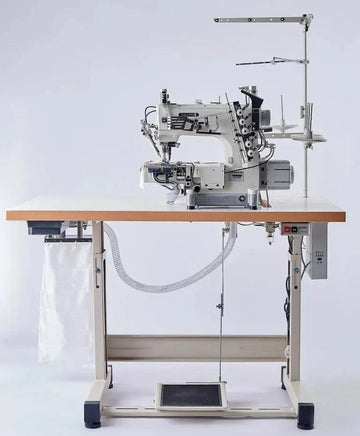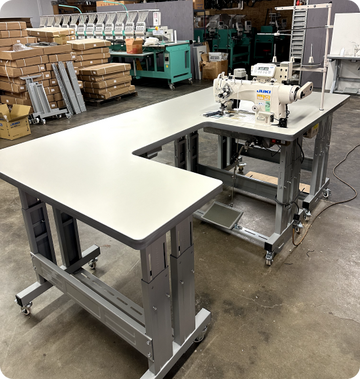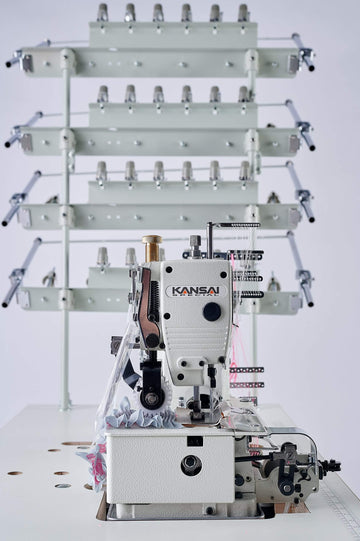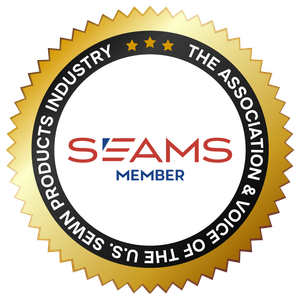With a staggering value of $1.8 trillion, the global apparel market opens up unlimited opportunities for aspiring entrepreneurs. Since the demand for clothing increases rapidly, starting a garment manufacturing business seems to be a very lucrative venture, especially for those willing to transform their bold ideas into stylish collections and distinctive fashion items.
However, breaking into the market requires more than just a great sense of style – you should understand all the intricacies of garment production and business management to succeed. So, this guide covers the best tips and strategies on how to start a clothing manufacturing business so that you can navigate the process smoothly.
What Is a Garment Factory?
A garment factory is a specialized manufacturing unit that handles clothing production. These facilities transform fabrics sourced from textile factories into finished apparel through a number of production stages, including cutting and sewing fabrics, checking the quality of resulting items, adding labels, and packing garments for retail. Garment factories may be small-scale (often focused on niche markets or custom clothing production) and industrial (designed to produce garments in large volumes).
How Clothes Are Made in Factories
Garment production is a complex process consisting of several stages:
-
Designing: developing clothing designs using CAD software or sketches. The stage also involves choosing suitable fabric types, measurements, and stitching patterns.
-
Sourcing fabric: purchasing the needed fabrics from textile factories.
-
Cutting: laying fabrics and cutting them based on the chosen pattern templates.
-
Sewing: sewing fabric pieces together according to established design specifications using commercial or industrial sewing machines.
-
Finishing: ironing garment items, trimming excess threads, adding labels, and checking the product quality.
-
Packing and distribution: preparing garments for delivery by folding and packing them in bags or boxes.
How to Manufacture Clothes: Key Considerations
Clothing production requires strategic planning, as each step involved in the process affects the quality of the final product. Here’s how to produce clothes at any scale:
-
Choosing the right materials and suppliers: sourcing top-quality fabrics from reliable suppliers ensures consistency in garment production. Therefore, decide on the type of fabric you are willing to work with and find a trustworthy supplier who has all the required certifications, ensures timely deliveries, and offers better prices. You can do this through online supplier directories and marketplaces, sourcing agents, and textile associations.
-
Essential machinery and tools: stock up with the needed equipment based on the type of clothing you are going to produce (pattern-making software, sewing machines, measuring tools, pressing and finishing equipment, etc.). You can browse through the selection of top-tier sewing machines and accessories offered on our website. Located in South El Monte, Los Angeles, California, Prizzi supplies industrial-grade equipment across the US and can become your trusted sewing partner for years to come.
-
Labor and staffing considerations: determine how many employees you need to start a garment manufacturing business. When hiring staff, prioritize experience in similar production environments, offer competitive wages, and arrange training programs for all newcomers.
-
Quality control processes: implementing stringent quality control is essential for building a good brand reputation. The most efficient practices include pre-production checks, in-line inspections, and final quality control. It’s also a smart idea to conduct garment factory audits 2-4 times a year.
Read Also: Explaining Garment Factory Audits: Benefits, Types, Checklist Highlights & More
How to Start a Small Garment Business
Here are a few essentials on how to start a garment manufacturing business for small-scale clothing production:
-
Choosing a niche or product category: focus on a specific niche or clothing category to manage business operations more easily and effectively (sportswear, baby clothes, men’s outfits, etc.).
-
Market research: careful market research will help you determine the most profitable business niche, evaluate your competitors, understand consumer preferences, and identify current fashion trends.
-
Home-based vs. workshop business model: decide whether you want to manage the business from home or rent a small workshop. The latter option is suitable if you have more equipment and want to grow your brand quickly.
-
Business planning: create a detailed business plan that includes information about your entrepreneurial goals, financial projections, target audience, and marketing strategies.
-
Legal and licensing basics: register your business and get all the required manufacturing licenses and permits to produce garments legally. In addition, familiarize yourself with the laws regulating the industry in your area and follow them strictly.
-
Low-investment setup ideas: consider starting your business with a basic sewing setup to reduce initial investment. Calculate how many machines and tables you need to launch the production, and do not pay for what you cannot afford so far. You can start with factory-serviced machines or consider financing options to cut the costs.
-
Sewing machine setup: invest in quality sewing machines and components for every stage of the production process (cutting tables, steam irons, etc.). Check the warranty period and support accessibility when choosing sewing machines and components.
-
Sample development and testing: before launching full-scale production, create a few garment samples to ensure that your product looks and functions as intended.
How to Set Up a Sewing Production Line
A well-organized production line enhances the quality and productivity of a garment manufacturing business. The following tips will help you set it up properly:
-
Layout planning: most entrepreneurs starting a clothes manufacturing business set up a straight cut-sew-finish production line, ensuring a smooth flow of materials during the process. The point is to maximize the workflow while keeping the process quick and hassle-free.
-
Operator roles and task division: divide all production processes into smaller tasks and assign responsibilities to your team members according to their skill levels.
-
Efficiency and productivity tips: perform similar operations together to save time re-adjusting sewing machines. Plus, set daily deadlines and track productivity to identify slowdowns.
-
Safety standards: implement appropriate safety measures to prevent accidents and health hazards. For example, use machine needle guards and belt covers, provide proper lighting, and invest in ergonomic sewing tables.
How to Start a Textile Manufacturing Business
Textile manufacturers produce fabrics from raw materials (cotton, polyester, wool, viscose, etc.) for subsequent use at garment factories. If you are wondering how to start a textile manufacturing company, the following information may come in handy:
-
Fabric production process: first, the raw fibers are spun into yarns, which are then woven into different textiles. The fabrics can also be dyed based on the design needs.
-
Machinery required: equipment setup depends on the final product you are willing to produce. However, it typically includes carding machines, spinning systems, yarn gassing machines, winding machines, weaving machines, and dyeing machines.
-
Scaling from textiles to finished clothing: one of the perks of starting a textile manufacturing business is that you can grow your operational activities to clothing production and create garments using your own fabrics. This eliminates the need for sourcing materials from third-party suppliers, thereby increasing your profit margin.
Financial Planning and Investment
Smart budget planning is arguably one of the most crucial tips on how to start clothes manufacturing business successfully. Keep these tips in mind to get the most out of your venture:
-
Keep track of your profits and expenses
-
Seek investment options to support your startup
-
Scale your business gradually according to your financial capabilities
-
Opt for quality equipment that requires less maintenance
-
Avoid overstocking raw materials
-
Automate basic accounting tasks using specialized business productivity apps
Marketing and Sales Strategies
Well-thought-out marketing and sales strategies will help build your brand and attract more clients. Leverage the following practices to increase your visibility in the market:
-
Use social media and popular e-commerce platforms to reach your target audience
-
Establish different sales channels (retail stores, online marketplaces, wholesale distribution, etc.)
-
Attend trade shows and industry events
-
Gather customer feedback to improve your offerings
Common Challenges and Solutions
When considering how to start a sewing factory, it’s crucial to think over all the potential difficulties and their solutions in advance. Here are some good ways to handle the most common issues entrepreneurs encounter:
-
Production slowdowns: train your employees to complete multiple tasks simultaneously during the peak hours and use workflow optimization tools to boost productivity. Also, choose modern sewing machines that speed up labor-intensive processes and increase production efficiency.
-
Inconsistent product quality: implement quality checks on each stage of the manufacturing process.
-
Non-compliance with regulatory requirements: get all the needed licenses and keep documentation up to date. Furthermore, watch for changes in the industry standards and react accordingly.
Conclusion
Now that you know how to start manufacturing clothing, you are ready to take the first step towards launching your business. The industry offers enormous potential, and with careful planning, you can capitalize on your ideas and reach your entrepreneurial goals. Remember to focus on quality, efficiency, and customer satisfaction, whether you are launching a home-based startup or large-scale garment production.
Co-Owner at Prizzi Sewing Machine Co.
Expert in sewing factory workflow optimization











